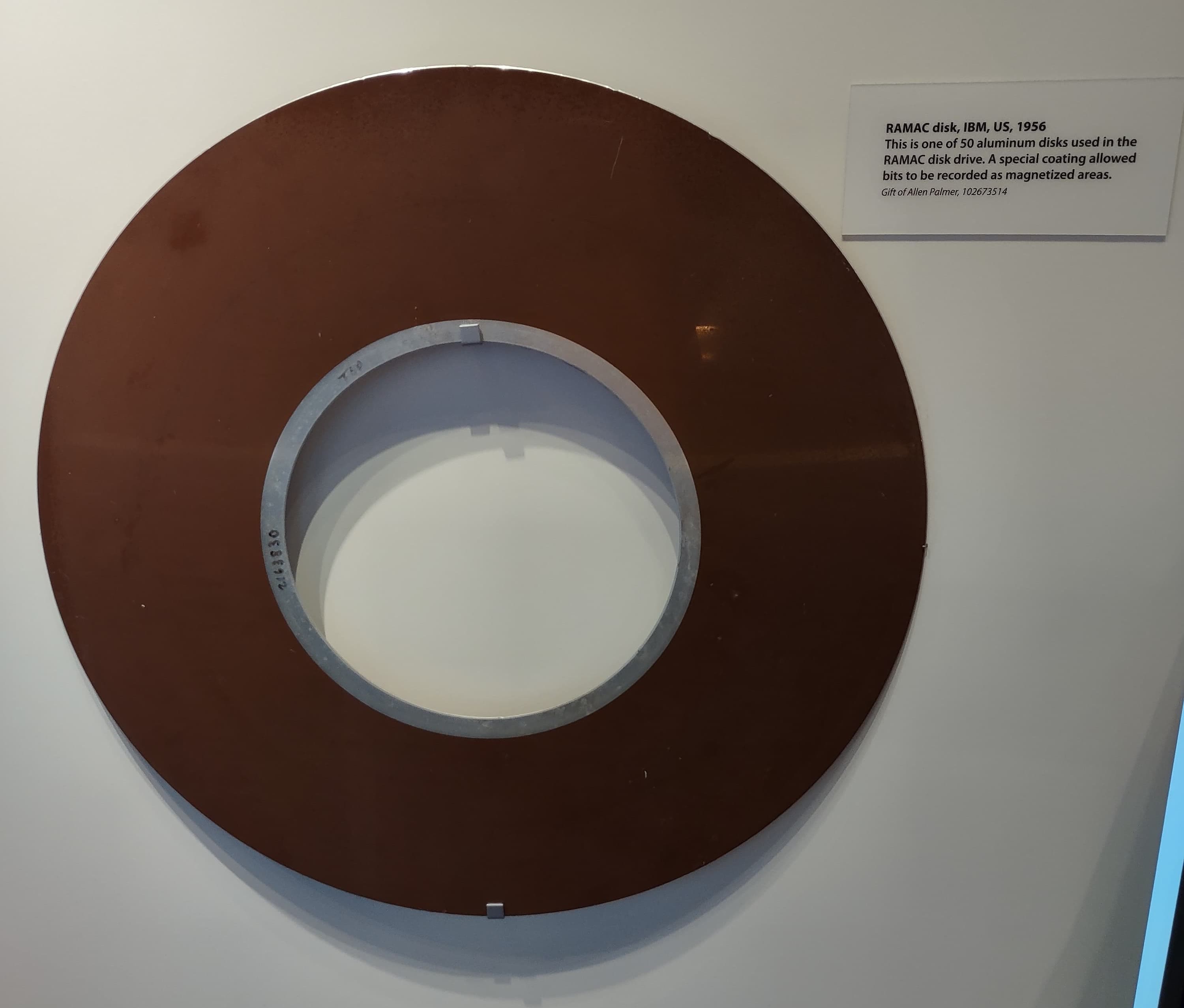IBM 305 RAMAC and the 1960 Winter Olympics
First Published: 03/09/24
James Porter: Let me interrupt Wes, to point out to people when they see this, a little bit of background. Wes lived through the Second World War as a bomber pilot. At one point in the South Pacific, Wes' s plane was shot down and several members of his crew were killed. He was lucky to get out of the plane, lucky to get out of the jungle that he had to go through for several days to survive. Yet when he went to work for IBM he almost got killed by a disk drive. (laughter)
Wesley Dickinson: The thing that kept us from getting killed was a shield that Don Johnson invented to put around the whole RAMAC disk assembly. It slowed down the shrapnel. Leonard and I were the only ones in the room. We started it up. It didn't even get up to full speed before it started to fly apart. The shaft spacers were without any disks on them because we just had one disk each on the bottom and top. There was nothing to contain the spacers. The spacers started to break because there was an intentionally cut slot through on one side to make them easier to put on the big shaft - it was about six-inches in diameter. Leonard suffered a cut tendon in his thumb. In my case it hit me on the nose and broke my nose. The same piece hit me near my right eye and on the side of my face. Both of us went to the hospital. In my case it was much easier, I only had a little broken nose. I have a big nose anyhow. For Leonard, they had to go in and do some work and tie things together in his thumb. That really preceded the time we were able to read and write or try to read and write. Without Don Johnson's plastic shield on there ~ I think they were actually Plexiglas - we probably wouldn't be around today. That reminds me, when I got shot down if I would have been this much (a few inches) to the right, I wouldn't be here today.
- Wesley Dickinson and James Porter discussing IBM’s RAMAC and the creation of the world’s first disk drive
I had a smackdackingly memorable summer! You know how little princesses dream about living in the biggest castles, and vampires dream of drinking the most exquisite blood? Well, for a long time, I had a dream of visiting the Bay Area and exploring the Computer History Museum! And I managed to do just that.
For a multi-trillion dollar industry, we sure seem to have a shortage of computer museums. Growing up in Mumbai, I couldn’t find any. As recently as 2019, the big three museums I dreamed of visiting were the Computer History Museum (CHM) near Googleplex, Paul Allen’s Living Computers Museum (LCM) in Seattle, and The National Museum of Computing in Bletchley Park. Unfortunately, during COVID-19, LCM shut down, never to open again, and a few months ago, the Paul Allen Estate announced that the museum would be permanently closed with its items auctioned off. A real bummer, cause I lived in Seattle the summer of ’22 and would have loved to thoroughly explore the place.
Anyway, the CHM trip was fantastic. I got to see one of Waymo’s earliest prototypes, a bunch of slide rules and mechanical calculators, found a bunch of retro advertisements and posters to explore further, learned about the Silicon Valley Napkin, Michael Noll’s work on computer-generated art, the U.S. Navy’s Project 91, IBM capitalizing on FDR’s Social Security Act, got to be up close to Jacquard’s loom cards and their fabrics, finally got to play Pac-Man the way it was supposed to be played, saw the Enigma machine, the Apollo Guidance Computer, the world’s first RAM chip used in the Whirlwind Computer, Cray-1, a Wozniak-signed Apple 1, one of Google’s earliest servers, the original Ethernet cable, PDP-1, and much, much more.
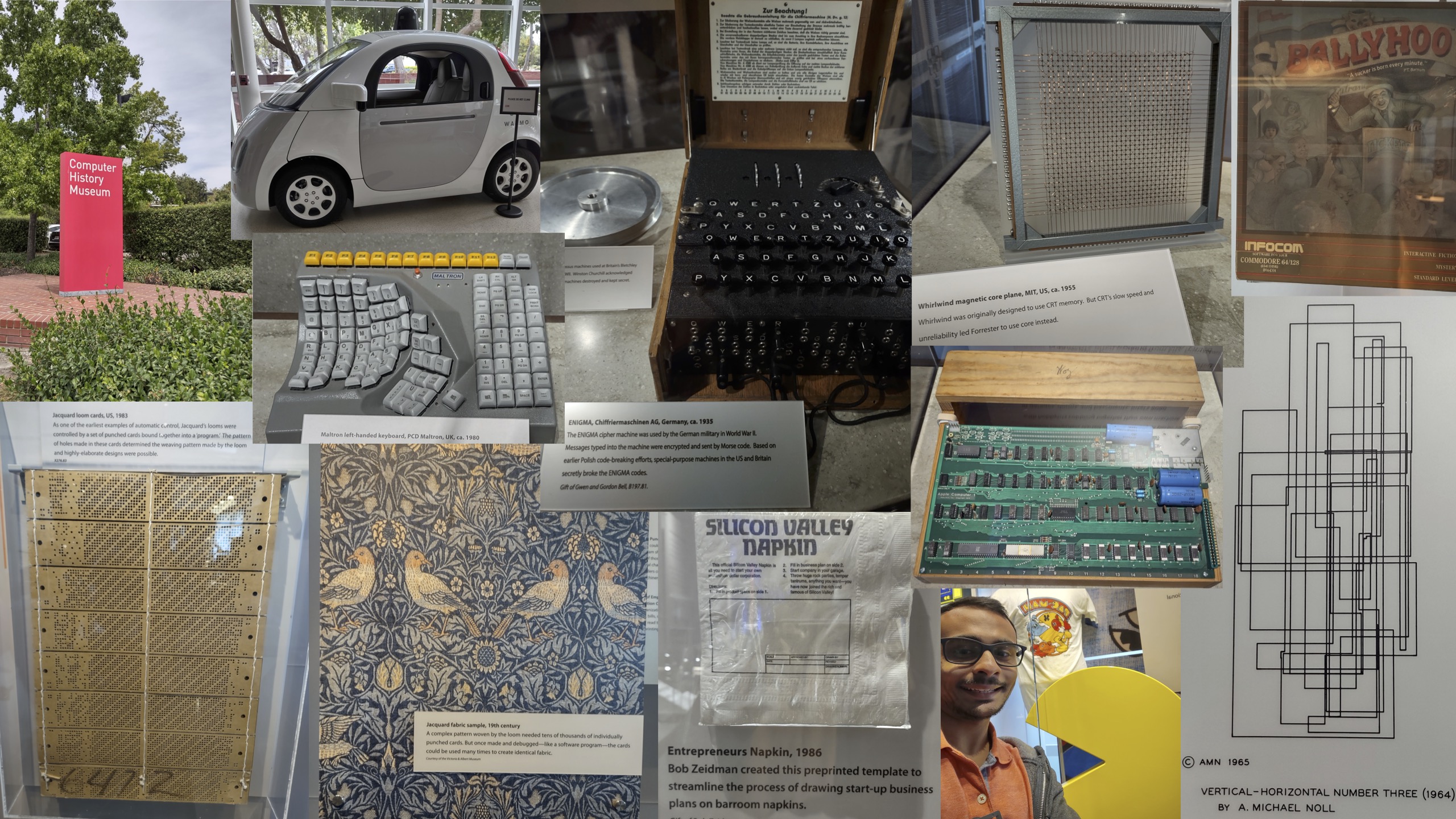
Innocently wandering into their gift shop, I asked one of the attendants if they had punch cards for purchase. In a jiffy, he went to the back and brought out a whole stack, giving me a few blank punch cards to keep for free. My first punch cards! If you plan to visit CHM, I encourage you to do so on Saturday mornings to see their IBM 1401 in action. They even have demos on PDP-1 and Spacewar on certain Saturdays. Alas, I went there on a Friday. Maybe next time.
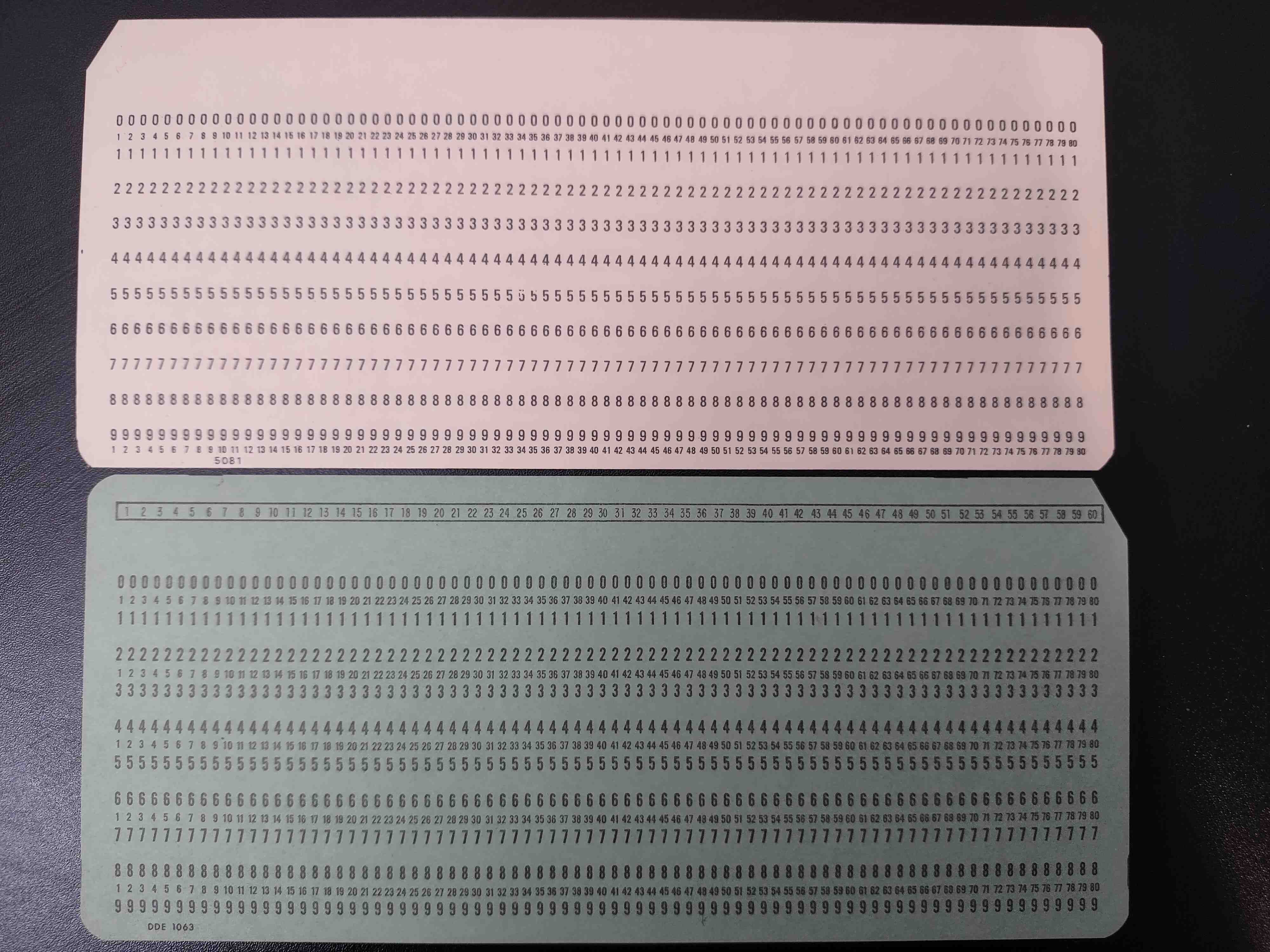
Anyway, another place I had the opportunity to explore in California was Lake Tahoe - a majestic artifact of beauty. While there, we stayed in Olympic Valley, the home of the 1960 Winter Olympics and the topic of this blog post. So, what was so special about the 1960 Winter Olympics, and what is its connection with the IBM 305 RAMAC? What is the IBM 305 RAMAC?
Possibly, the perfect way to describe this would be by showing a poster present in their Olympic museum:
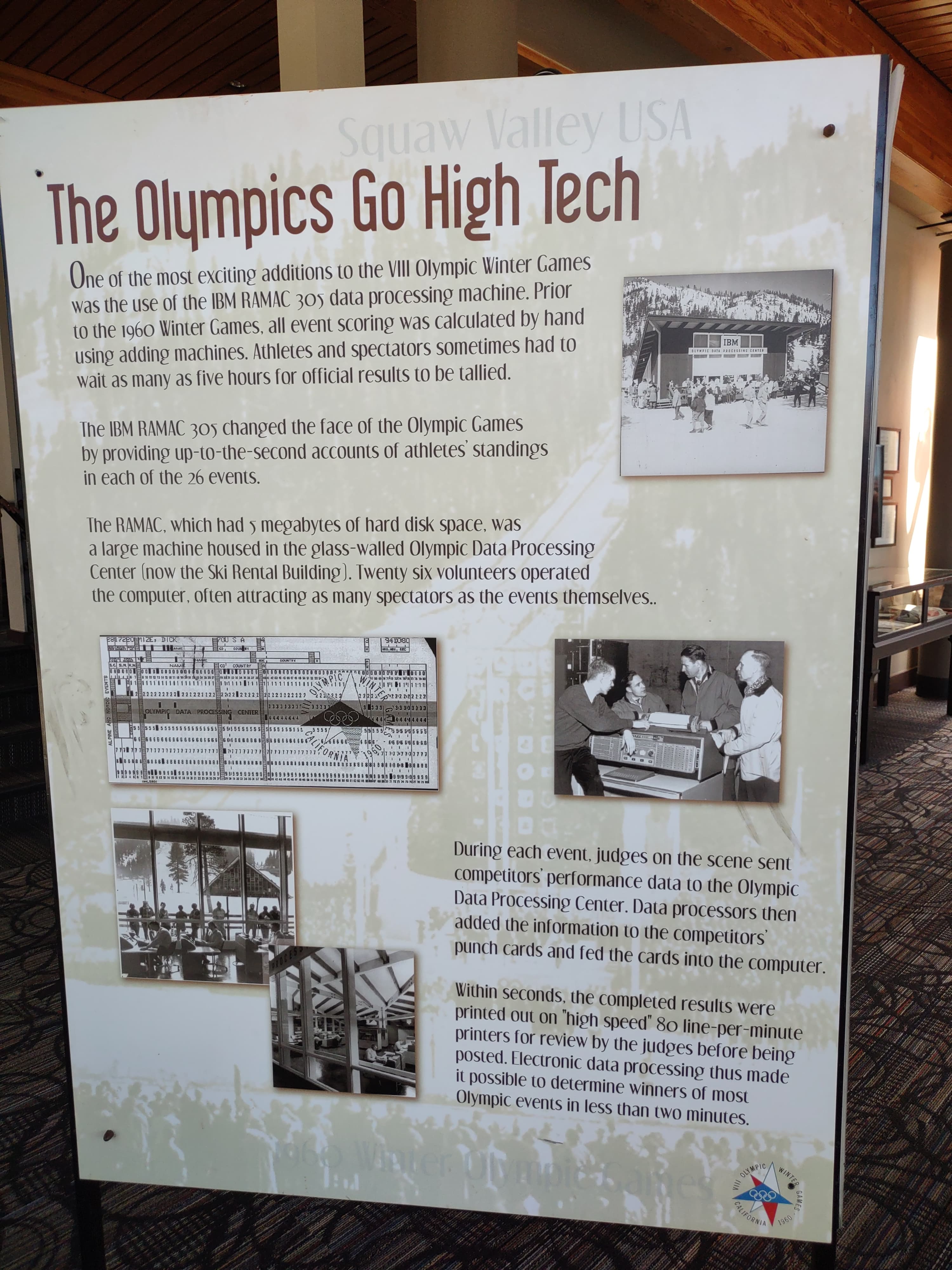
The poster says the following:
One of the most exciting additions to the VIII Olympic Winter Games was the use of the IBM RAMAC 305 data processing machine. Prior to the 1960 Winter Games, all event scoring was calculated by hand using adding machines. Athletes and spectators sometimes had to wait as many as five hours for official results to be called. The IBM RAMAC 305 changed the face of the Olympic Games by providing up-to-the-second accounts of athletes’ standings in each of the 26 events.
The RAMAC, which had 5 megabytes of hard disk space, was a large machine housed in the glass-walled Olympic Data Processing Center (now the Ski Rental Building). Twenty six volunteers operated the computer, often attracting as many spectators as the events themselves.
During each event, judges on the scene sent competitors’ performance data to the Olympic Data Processing Center. Data processors then added the information to the competitors’ punch cards and fed the cards into the computer. Within seconds, the completed results were printed out on “high speed” 80 line-per-minute printers for review by the judges before being posted. Electronic data processing thus made it possible to determine winners of most Olympic events in less than two minutes.
One of the first thoughts I had when I read this was: what kind of calculations were done that required as many as five hours for official results to be declared? I found an answer to this in the Medford Mail Tribune’s January 11, 1959 edition. The then Olympic Games Organizing Committee president, Prentis C. Hale, had the following to say:
Hale noted that final placings in previous Winter Olympics have often been unavailable for as long as five hours after an event because of involved manual calculations … Preliminary planning by IBM personnel include a detailed six-month study of winter sports events scoring procedures with the subsequent development of programs for IBM equipment.
In addition to score computations, RAMAC's huge memory file will contain biographical and past-performance information on every competitor, including a 200-word biography with an additional 200-word brief of past and current performances.
Whenever information Is desired on a competitor, RAMAC's memory file will be "queried" and the reply will be automatically printed within seconds. The questioner may specify his answer be in French, the official language of the Olympics, or in English - the alternate language. Events to be scored by RAMAC include speed skating, figure skating and all ski events - slaloms, downhills, cross-country races and jumping. Hale pointed out that scoring has always been necessarily slow for such competitions as figure skating, Nordic combined events and jumping because of the complex formulas necessary to convert performances into scoring points.
This is further elaborated in the VIII Olympic Winter Games’ final report, which also gives us a glimpse of what these data processing centers looked like.
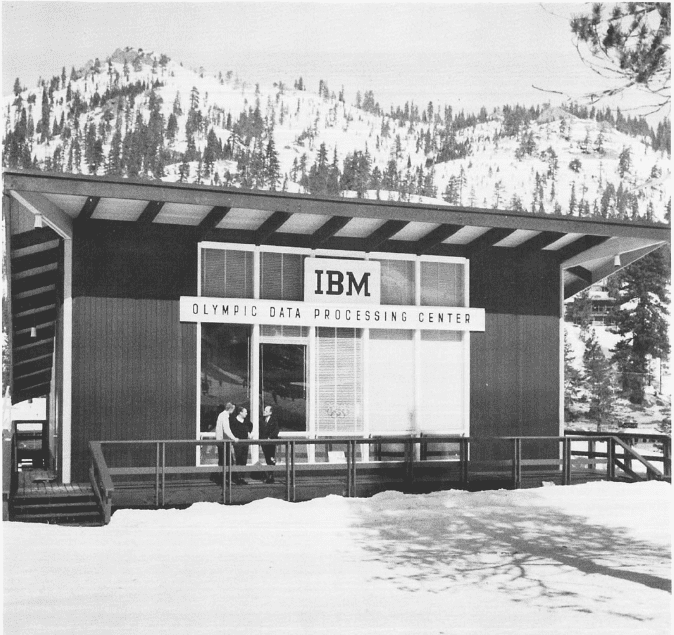
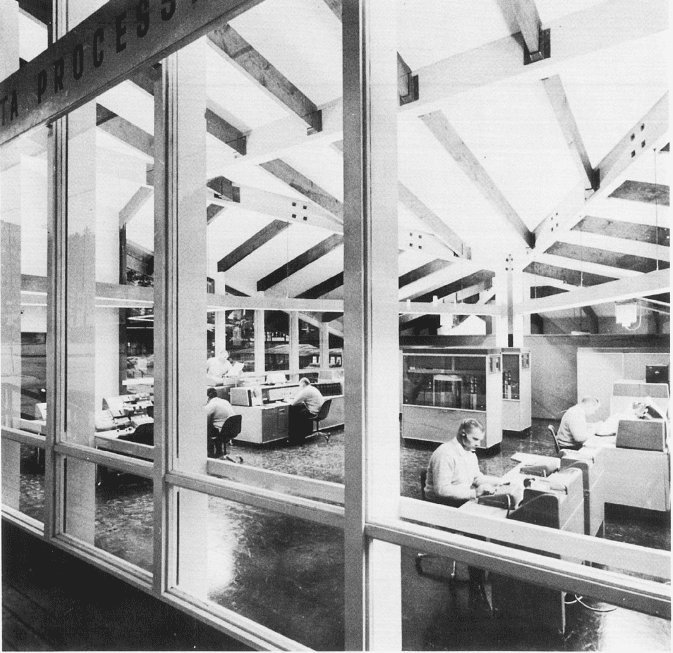
To understand the complexity better, take figure skating as an example. Olympedia had the following to say about the 1960 figure skating scoring:
Men and women skated compulsory figures and a free skating program, with the compulsory figures counting towards 60% of the final score, while pairs skated a single free skate program. Overall placements were determined by the majority placement system. The compulsory figures were changed from six to five figures, but the percentages were not changed.
To elaborate on this, it seems that individual skaters competed in two parts: the 'compulsory figures' and the 'free skating program.' In the former, skaters had to perform a series of prescribed moves on the ice and were likely judged on their accuracy and overall control. The latter allowed for a more creative display where skaters could showcase their skills in jumps, spins, and footwork. As mentioned, the compulsory figures counted for 60% of the final score, whereas free skating accounted for 40%. From what I can make, the majority placement system likely refers to the fact that there were multiple judges. Each judge would rank the skaters (or assign a score) after their segments, and the overall placement was determined by the majority of the judges' rankings.
There were 19 men and 26 women participating in this competition in 1960. Indeed, a lot of calculations!
Perhaps the most fascinating thing about the IBM 305 RAMAC was that it was the first computer to use a random-access disk drive, the origins of which are narrated by Louis Stevens in RAMAC’s oral history project:
Jim: When did it start to gel - the project to do something with the disk?
Lou: Rey assigned Art Critchlow to do a study. Rey had always been interested in source recording per se; source recording being key punching. Rey had built the 026 key punch in Endicott and he had done a lot of other source recording-like things - that's conversion of something to punch card format. So he assigned Art Critchlow to look at the source recording problem - how could we get information into the punch card at the earliest possible time? Art looked at lots and lots of different alternatives. It was obvious there should be some sort of a storage medium - unchanging data. He ran across a thing called a tub file. A tub file was a place where you stored pre-punched cards. To do an invoice, you'd pick a card of the customer and his address and a card for each of the items on the invoice and then process them in typically EAM machines - EAM means Electrical Accounting Machines - punched card machines - until they produced a printed invoice. So this was random access to the individual punched card records.
Obviously, you could replace that tub file with some sort of a magnetic storage that would be automatic. Let's try it. What kind of a magnetic storage could we find? So Critchlow looked at many alternatives. There had been an article published in Electrical Engineering (in 1950) by Jacob Rabinow. It described a funny disk drive with a number of stationary disks in the shape of an 'O' with a 'V' cut into them so a head could move around and select a disk. After selection, the disk was then rotated - a really amazing mechanical monster. From that starting point, they said - why not rotate the disk constantly and cause the head to move back and forth between the disks? Critchlow proposed a project, which was ultimately labeled the file-to-card machine, which was really just a storage device to replace the tub file. Tom was a vital ingredient for making those pieces fit.
I highly encourage you to explore all five parts of RAMAC’s oral history project, published by IBM and hosted by CHM.
And that’s it, folks! Hope you had fun exploring this unique historical nugget. I want to leave you with pictures of a RAMAC disk and RAMAC’s actuator and disk stack. It had 50 24-inch disks that spun at 1200 RPM and held 5 million characters of information. Enough to host the Olympics!
